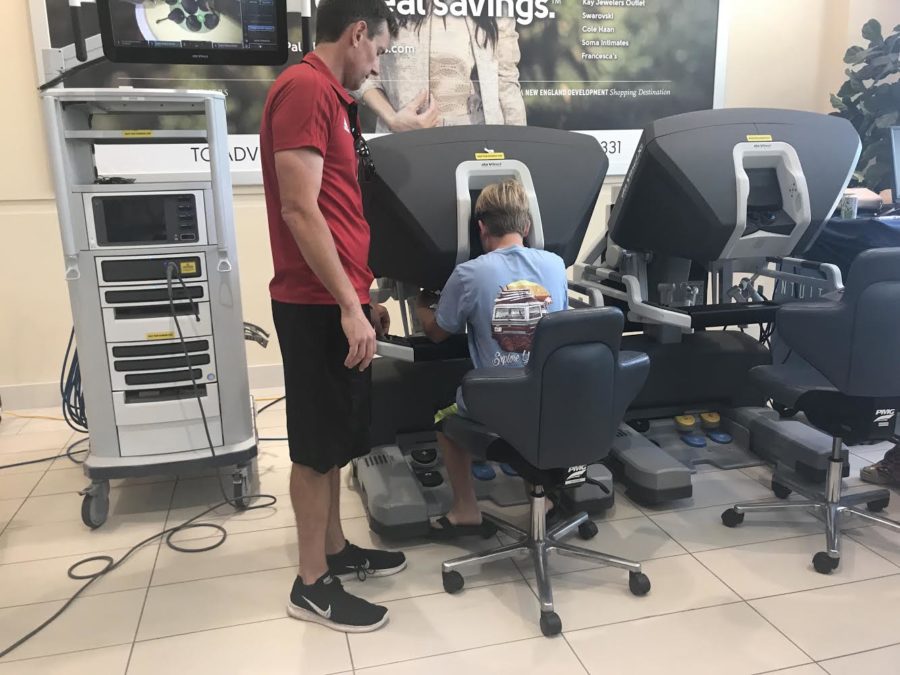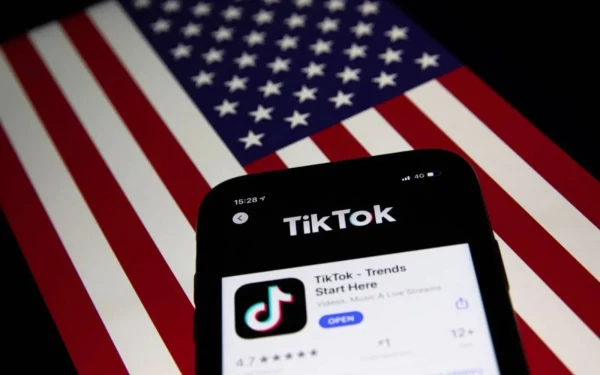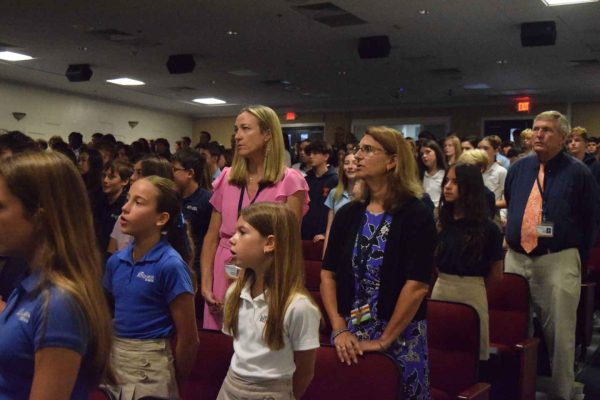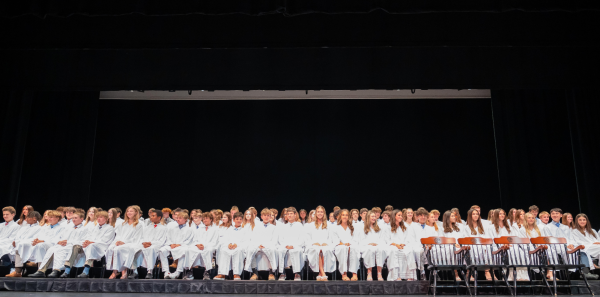Students Get a Glimpse of the Future of Surgery
With the help of a Good Samaritan Medical Center staff member, sixth grader Colby Mack (seated) tries his hand at controlling the da Vinci Xi.
On Saturday April 28, the Good Samaritan Medical Center in West Palm Beach held a private event exclusively for The Benjamin School to showcase its new surgical instrument: the da Vinci Xi Surgical System. Invented by the American company Intuitive Surgical, the da Vinci Xi Surgical System is a robot which enables surgeons to perform minimally invasive operations with small incisions. The robot offers a 3D HD view of a patient’s body, and includes instruments that can move with exact precision, unlike the human hand. Priced at a whopping $1.75 million, this robot offers an alternative to traditional manual surgery.
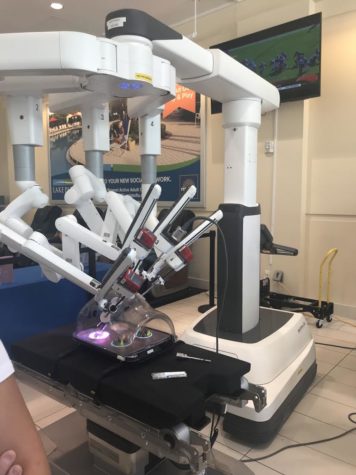
The da Vinci Xi, pictured here at Good Samaritan Medical Center, may usher in the future of medical technology.
Some students got to experience this new surgical invention first hand at Good Samaritan as both middle school and upper school students and teachers attended the event. “It was intriguing to see how our world is becoming more technologically advanced,” said eighth grader Matthew Roundtree, who attend the showing. “Personally, I wouldn’t trust a robot to do surgery on me. It looked cool, but the fact that it’s not a person and a robot is a little strange.”
“I wouldn’t want a robot doing surgery on me until it is proven over time,” added eighth grader Will DiMaio. “Although, I thought it was very interesting to see the future of medical science right before my eyes.”
The question many students and parents asked was, “Would this robot replace the old-fashioned way of conducting surgery?” The answer is possibly. As it stands now, the robot is not autonomous, meaning a surgeon still needs to guide the da Vinci Xi via a device similar to a virtual reality hand controller.
While many surgeons may prefer to conduct surgeries without the assistance of the da Vinci Xi, the robot may be better in the long run for the patient as it doesn’t shake like the human hand, and it can move 360° degrees. The device also ensures minimal blood loss, quicker recovery time after surgery, and minimal scarring. This is because of the small, exact incisions performed by the da Vinci’s “hands.” The robot essentially eliminates human error.
The CEO of Good Samaritan explained that this program is the future for all types of surgery, including open heart surgery, pancreatic surgery, appendectomies, and many more.
Teachers who attended the event were not only fangirling over the new fancy surgical instrument, but also the the hospital and its staff. “I thought Good Samaritan was so gracious to do a private viewing just for us,” said seventh-grade science teacher Mrs. Stephanie Oster. “They had surgeons, technicians, nurses, the CEO, everyone. They brought their full team to support Benjamin students, and in return they were so impressed with the students and their questions.”
Oster’s husband, math teacher Mr. Matthew Oster, may have put it best after getting a close-up on the new medical technology.“The future is here now,” he said. Indeed it is. The first form of surgery was back in the 13th century with simple operations like pulling teeth and setting broken bones. The first successful surgery with anesthesia was in 1846, performed by John Collins Warren. Who knows? Maybe in the next decade, robots will be saving lives in operating rooms all throughout the country, or even the world.
